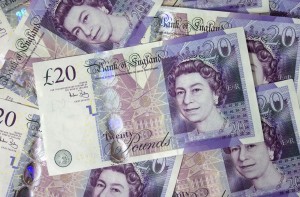 Yesterday’s trade saw GBP/USD within the range of 1.5492-1.5301. The pair closed at 1.5351, down 0.58% for the day, ending seven consecutive sessions of gains.
Yesterday’s trade saw GBP/USD within the range of 1.5492-1.5301. The pair closed at 1.5351, down 0.58% for the day, ending seven consecutive sessions of gains.
At 06:07 GMT today GBP/USD was down 0.05% for the day to trade at 1.5345. The cross held in a daily range between 1.5304 and 1.5492.
Fundamental view
United Kingdom
Activity in the United Kingdom’s sector of manufacturing probably grew at a faster pace in April, with the corresponding PMI expected to come in at a reading of 54.6, according to the median forecast of experts, from 54.4 in March. If so, this would be the 25th consecutive month when the PMI stood above the key level of 50.0.
The index is based on a survey encompassing managers of companies that operate in the sector of manufacturing. They are asked about their estimate in regard to current business conditions in the sector in terms of new orders, output, employment, demand in the future. Values above 50.0 signify that respondents are rather optimists than pessimists. Higher-than-projected PMI readings would boost demand for the sterling. The Chartered Institute of Procurement & Supply (CIPS) is expected to announce the official reading at 08:30 GMT.
Meanwhile, the number of mortgage approvals in the United Kingdom probably was 62 400 in March, according to analysts’ expectations, up from 61 760 during the prior month. If so, this would be the highest number since August 2014, when there were 64 050 approved mortgages reported.
Mortgage approvals are considered as a leading indicator, reflecting the health of the country’s housing market. In case the number of mortgage approvals increases more than anticipated, this implies potentially higher demand in the nations housing sector and, respectively, a positive impulse for overall economy. Therefore, the national currency would also be supported. Bank of England will release the official numbers at 08:30 GMT.
United States
Manufacturing activity growth in the US probably eased slightly in April from a month earlier, Markit Economics will report, with the corresponding final Purchasing Managers Index expected to confirm a preliminary reading of 54.2 released on April 23rd. The gauge stood at 55.7 in March.
Chris Williamson, Chief Economist at Markit commented in the preliminary report: “Key to the slowdown was a weakening of export orders, in turn a symptom of the loss of competitiveness arising from the dollar’s strength. However, while exporters are suffering, domestic demand looks to have remained robust, helping to sustain a reasonably strong production trend.”
Values above the key level of 50.0 indicate optimism (expanding activity). In case the manufacturing PMI advanced more than anticipated, this would have a certain bullish effect on the US dollar, and vice versa. The data by Markit Economics are due out at 13:45 GMT.
A more widely tracked report on US manufacturing activity will be released by the Institute for Supply Management at 14:00 GMT. Activity growth probably accelerated in April, with the corresponding manufacturing PMI projected to register a reading of 52.0, according to expectations, from 51.5 in March. The manufacturing sub-index also likely improved, to 50.2 from 50.0 in March.
The Manufacturing Purchasing Managers’ Index (PMI) is a compound index, which represents manufacturing activity in 18 different industries. It is comprised by four equally-weighted components: seasonally adjusted employment, seasonally adjusted production inventories, seasonally adjusted new orders and supplier deliveries. The index is based on a survey of 300 purchasing managers.
Participants can either respond with “better”, “same”, or “worse” to the questions about the industry, in which they operate. The resulting PMI value is measured from 0 to 100. If the index shows a value of 100.0, this means that 100% of the respondents reported an improvement in conditions. If the index shows a value of 0, this means that 100% of the respondents reported a deterioration in conditions. If 100% of the respondents saw no change in conditions, the index will show a reading of 50.0. Therefore, readings above threshold of 50.0 are indicative of expanding activity in the sector of manufacturing. In case the PMI rose more than anticipated, this would certainly have a bullish effect on the greenback, and vice versa.
Consumer sentiment
Meanwhile, the monthly survey by Thomson Reuters and the University of Michigan may show that consumer confidence in the United States improved in April. The final reading of the corresponding index, which usually comes out two weeks after the preliminary data, will probably come in at 96.0, up from a preliminary value of 95.9 reported on April 17th. In March, the gauge of confidence registered a final reading of 93.0.
The survey encompasses about 500 respondents throughout the country. The index is comprised by two major components, a gauge of current conditions and a gauge of expectations. The current conditions index is based on the answers to two standard questions, while the index of expectations is based on three standard questions. All five questions have an equal weight in determining the value of the overall index.
The sub-index of current economic conditions, which measures US consumers’ views of their personal finances, probably increased to a reading of 108.3 in April from a final 105.0 in March. The sub-index of consumer expectations likely rose to 88.1 from a final value of 85.3 a month earlier.
In case the gauge of consumer sentiment showed a larger increase than anticipated, this would have a bullish effect on the US dollar. The final reading is due out at 14:00 GMT.
Pivot points
According to Binary Tribune’s daily analysis, the pair’s central pivot point stands at 1.5381. In case it penetrates the first resistance level at 1.5462, it will encounter next resistance at 1.5572. If breached, upside movement may attempt to advance to 1.5653.
If the cross drops below its S1 level at 1.5271, it will next see support at 1.5190. If the second key support zone is breached, downward movement may extend to 1.5080.
In weekly terms, the central pivot point is at 1.5078. The three key resistance levels are as follows: R1 – 1.5302, R2 – 1.5416, R3 – 1.5640. The three key support levels are: S1 – 1.4964, S2 – 1.4740, S3 – 1.4626.





